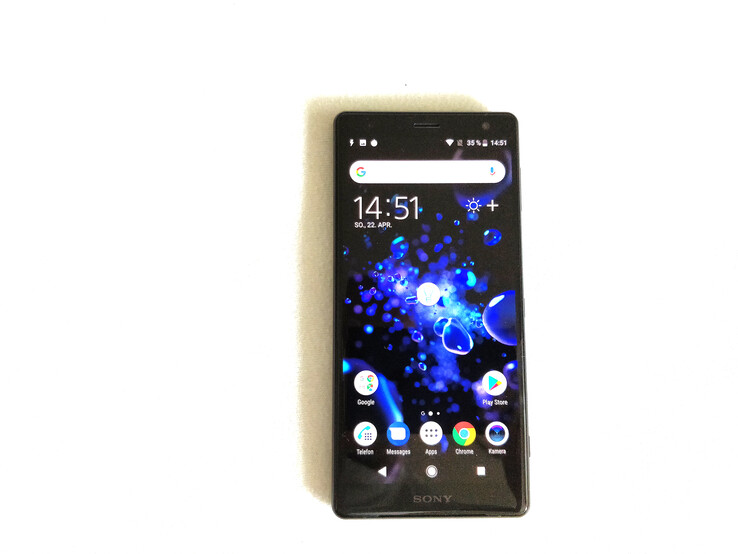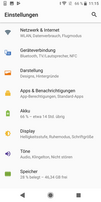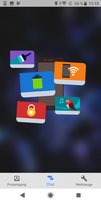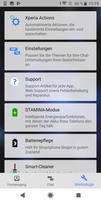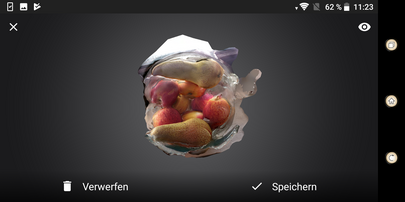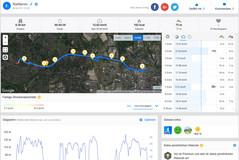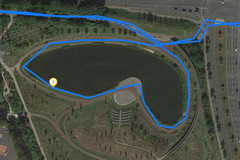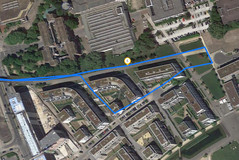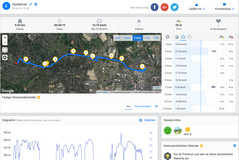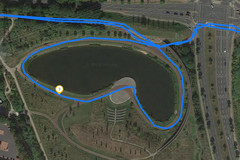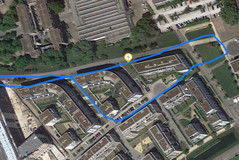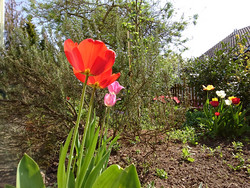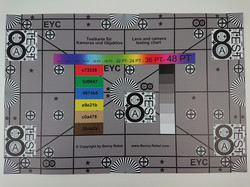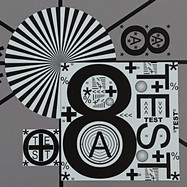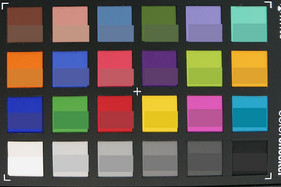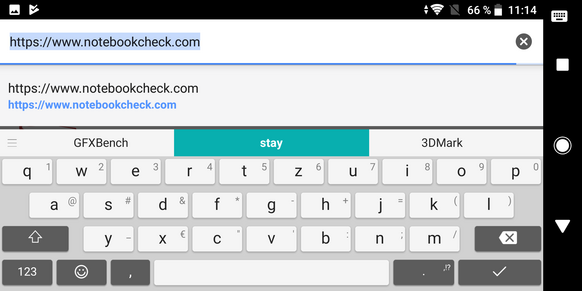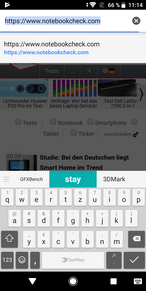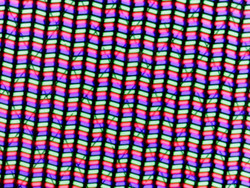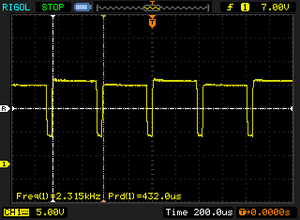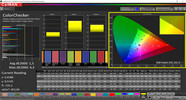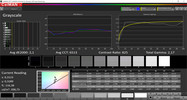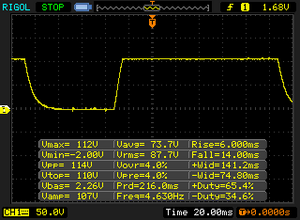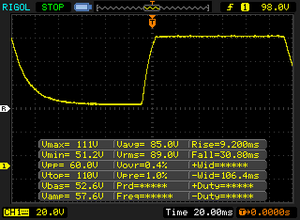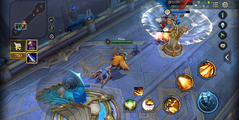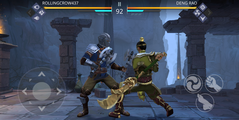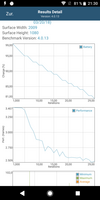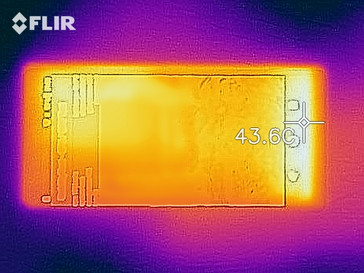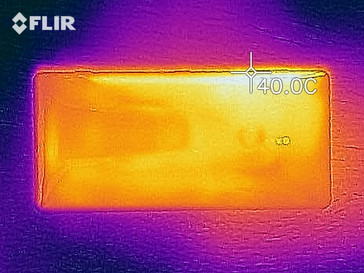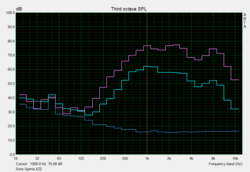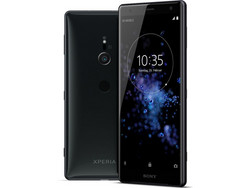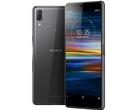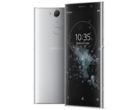Sony Xperia XZ2 Smartphone Review
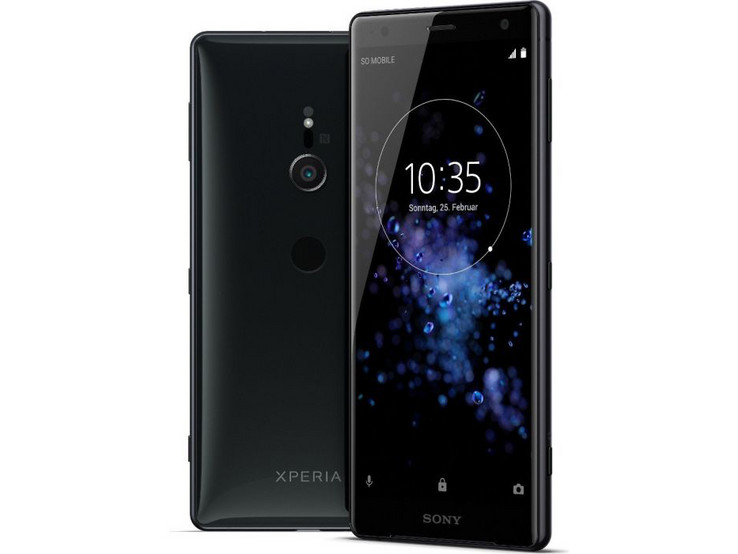
Whenever a new Sony flagship is released, we can be sure it picks up a new trend for displays and/or cameras, and then it will anchor this trend in the world of smartphones by being one of the first devices to use it. The same is true for the Xperia XZ2, our current test device: The display supports HDR 10 and can even upscale non-HDR content. Furthermore, the camera can record super-slow motion videos in Full HD for the first time and is also able to record videos in HDR. So Sony offers plenty of features here, but they also had to face criticism in the recent past: The Japanese company slept through the trend for 2:1 displays with sleek bezels and even the Xperia XZ2 still has not quite caught up to the competition in this regard.
We will compare the device to the Xperia XZ1 to find out if an upgrade is worth it for owners of the predecessor model. We will also include other high-end devices, such as the Samsung Galaxy S9, the Apple iPhone X, and the Huawei Mate 10 Pro in our comparison.
Case - New Design without Tradition
The manufacturer breaks new ground with the case of the Xperia XZ2. As mentioned, this was sorely needed, too, seeing as the last Xperia smartphones already had a slightly outdated appearance. This time, we receive at least slightly sleeker bezels and a trendy 2:1 display. The back no longer has the matte surface used for previous generations, but instead a curved 3D glass surface that is glossy and smooth. The design is reminiscent of HTC's current Liquid Surface design with flowing forms and it is a rather radical breach of Sony's former design tradition that favored matte surfaces and angular forms, bestowing it a certain uniqueness within the smartphone market. Maybe an evolutionary advancement of the previous design might have pleased the fans more.
Even so, thanks to its rounded back, the smartphone lies comfortably in the user's hand, but the smooth surface is rather slippery and prone to fingerprints. The build quality and the haptic are at a high level, but the transition areas between the back and the lateral metal frame feel different depending on the position on the smartphone. The available color options are black, white, pink, and teal. The device is dust- and waterproof according to IP68.
The Sony XZ2 is not a sleek smartphone: The rounded back gives it a thickness of 11.1 millimeters (~0.44 in) at the thickest point. Because of its broader bezels, it is also wider and longer than the Samsung Galaxy S9 and the iPhone X. Its weight of 198 grams (~0.44 lb) makes it also one of the heaviest devices.
Features - Plenty of Ports in the Xperia XZ2
4 GB of RAM and 64 GB of storage match not only the predecessor's values, but also those of most of the other high-end smartphones in our comparison. However, the Huawei Mate 10 Pro offers both more RAM and more storage space, and the iPhone X is available with more storage space as well.
Our test sample is a single-SIM device, identical to the model offered by the provider in combination with a contract. Both the single-SIM and dual-SIM variants are available over the counter and support a microSD card, although it occupies one of the two SIM slots for the dual-SIM variant. It is not possible to format the microSD card as internal storage and apps cannot be outsourced there.
DLNA, USB OTG, NFC and Bluetooth 5.0 with support for aptX HD are a solid starting point for a high-end smartphone. MHL, meaning the possibility to conduct video output via the USB port, is sadly not offered.
Software - Sony's Software Is Extensive and High-Quality
Sony has a good reputation in terms of software – the Android operating system is still rather fast with Sony's modifications and comes with a variety of additional features. It has detailed explanations on how to get the hang of this system for new users, and it can be heavily individualized thanks to numerous settings. Sony also shows that they have a heart for modders, supporting the development and installation of different operating systems on their devices in a separate area of the Sony Developer World.
On the other hand, many of the apps installed on Sony phones might be unnecessary. For instance, the apps of an online retailer were pre-installed on our test device. There are also exciting apps to be found on the smartphone, though, such as the 3D Creator App that enables the user to scan objects in 3D. The data can then be exported to a 3D printer or it can be used for custom 3D projects. Scanning one's own face works relatively well under good lighting conditions, but the result for complex objects, such as a glass fruit bowl, is still in need of improvement. Overall, though, it is rather impressive for a free smartphone app.
Communication and GPS - Many Connection Options, Exact Localization
Support for all current Wi-Fi standards is basically a necessity for high-end smartphones, and the Sony Xperia XZ2 does not show any weakness here either. In addition, the transfer rates in our standardized test with the reference router Linksys EA8500 are much faster than they were for the predecessor model, even outdoing the Samsung Galaxy S9. Our test device even takes the lead for transmission speed. Near the router, websites are loaded quickly and images do not take long either. At a distance of ten meters (~33 feet) to the access point and even through walls, we still had full reception and websites loaded only minimally more slowly.
Superfast 4G with transfer rates up to 1.2 GBit/s and over 20 supported LTE frequencies turn the Sony Z2 into a global player and make it a fast smartphone in terms of Internet usage – as long as the mobile network allows it. The reception should not prove an obstacle in any case: Our test device always had at least 3/4 LTE reception in the well-developed German D2 network while we were in the inner city, even inside concrete buildings.
| Networking | |
| iperf3 transmit AX12 | |
| Sony Xperia XZ2 | |
| Huawei Mate 10 Pro | |
| Huawei Mate 10 Pro | |
| Samsung Galaxy S9 | |
| Sony Xperia XZ1 | |
| Apple iPhone X | |
| iperf3 receive AX12 | |
| Apple iPhone X | |
| Sony Xperia XZ2 | |
| Samsung Galaxy S9 | |
| Sony Xperia XZ1 | |
| Huawei Mate 10 Pro | |
| Huawei Mate 10 Pro | |
The GPS module supports the Russian Glonass, the European Galileo and the Chinese Beidou as navigation systems. The Sony phone was able to locate us with an accuracy of 5 meters (~16.4 feet), even within buildings. Near a window, the localization is even more accurate at 4 meters (~13.1 feet), and outdoors at 3 meters (~9.8 feet).
But how accurate is the localization in continuous use, such as during a bike ride? We wanted to find out and brought along a Garmin Edge 500 as a comparison device, since this professional navigation system usually has a rather accurate localization. The measured track differed by only 40 meters (~131 feet) and the Sony smartphone showed a somewhat edgier track when looking more closely. This indicates that there was no localization point for longer stretches, forcing the system to draw a straight line to the next localization point. As these edges were not too common and not even the Garmin Edge 500 is perfect in this area, we still recommend the Sony Xperia XZ2 as a navigational device, as long as you do not demand extremely high standards of your GPS device.
Phone and Call Quality - Sony Has Done Better in the Past...
Sony uses the Android app for the smartphone's telephone functions, which is completely fine because the app has a clear layout and offers all the necessary features.
The call quality is okay, as long as the volume is not turned up too high: At maximum volume, a buzzing noise can be heard from the earpiece and there is noise interference. The microphone transmits our voice well, even when we speak quietly. It is not fond of loud voices, but even then it does not boom all that much. The same is true for the integrated hands-free mode: It is best not to raise the volume to the maximum to avoid booming. The speaker's sound is generally rather thin, but our voice is transmitted relatively clearly by the microphone.
Cameras - The XZ2 Takes Great Photos Despite Single Camera
The rear camera still has the same resolution as the predecessor Xperia XZ1, but it has a wider aperture, which should enable it to take better pictures in low-light situations. New options to record videos in HDR and to record short slow-motion videos at 960 frames per second in Full HD have been added. It is no longer necessary to switch to a separate app for 4K videos, but a 60-fps recording is still impossible. Samsung's Galaxy S9 is clearly ahead here. An overview of the exact differences in terms of video recording for the Galaxy S9 and the Xperia XZ2 can be found in this article.
Also remarkable: Opposing the current big trend, Sony does not install a dual- or even triple camera in its high-end model XZ2, instead opting for a single lens on the rear. A dual camera is only available for the flagship Xperia XZ2 Premium. A single camera does not necessarily pose a disadvantage, as long as the quality is sufficient. At 19 megapixels, the Xperia XZ2's camera does have a relatively high resolution. Sony attains high details in pictures taken with this single camera, and even extremely detailed surfaces and fine lines are captured well. However, dual-camera devices such as the Samsung Galaxy S9 Plus have a much faster lens speed. Surprisingly, Sony's camera also performed better than its competitors in low-light situations. Not even Sony's camera can avoid visible image noise, but the brightening is rather strong. Furthermore, the camera takes relatively long before it triggers. Sony explains this with the memory that has been integrated into the image sensor to ensure a good image quality in low-light conditions, as data can be read and processed significantly faster.
In comparison to the Xperia XZ1, the front camera's resolution has suffered noticeably and the aperture is lower, too. In normal lighting conditions, the front sensor still does its job well, showing vibrant colors and good dynamics in both dark and bright areas.
Videos recorded with the main camera are sharp and highly detailed, especially in 4K. The optional HDR mode works, but differences are only really noticeable in situations with high contrasts. The image stabilization works only at up to 1080p and 30 fps.
Under controlled testing conditions in our lab, we noticed slight impurities in large, colored areas, and the contrast was a bit too low. The sharpness remained very good throughout the entirety of the image though. The color representation was one shade too bright in comparison to the reference color space.
Accessories and Warranty
Other than the charger and a USB cable, the box also includes an adapter from USB-C to 3.5 mm audio jack and a headset with a good sound. A SIM tool is unnecessary as the SIM tray can be opened with one's finger. This time, the included charger is an actual Quick Charge 3.0 device, which had to be bought separately for 50 Euros (~$60) for the predecessor smartphone. Take note: For those interested in the Sony Xperia XZ2 Compact: The Quick Charger is not included here.
Sony offers a warranty of 24 months for its smartphones. Please see our Guarantees, Return Policies and Warranties FAQ for country-specific information.
Input Devices and Handling - Where Is the Fingerprint Sensor?
Sony does not use Google's GBoard as the virtual keyboard, which is normally delivered with Android, but instead they installed SwiftKey. This decision is mostly a matter of personal taste. In our opinion, both apps have a broad variety of settings and designs. Those who prefer an entirely different app can install it from the Google Play Store.
The touchscreen is rather sensitive and fingers glide easily on its surface. It responds with a high accuracy even in the corners. An inactivity display is available as well as a glove mode for the winter season.
The menu buttons can be found on the display. This smartphone does not offer an alternative, as all hardware buttons have been placed on the right side of the case: the volume rocker, the standby button and Sony's famous camera button, which can even be used for the focus thanks to having two pressure levels.
The fingerprint sensor has been placed on the rear and it works reliably, also capable of waking the smartphone from standby mode. However, it is relatively hard to tell apart the sensor and the main camera just above it by touch. Even after long exposure to this smartphone we still kept wondering why the fingerprint sensor was not responding until we realized that the finger was touching the camera instead of the fingerprint sensor. This in itself is already rather inconvenient, but we also had to constantly clean the lens because of accidental touches.
Display - Great Color Fidelity and Brightness in the Xperia XZ2
Sony still cannot be dissuaded from installing Full HD displays in its high-end smartphones: While the Samsung Galaxy S9 already has a display with a resolution of 2960x1440 pixels, Sony still uses the Full HD 2:1 variant with 2160x1080 pixels. Sony installed an IPS panel that is even slightly brighter than the already bright predecessor model. At 96%, the brightness distribution is rather exact as well: Colored areas appear as having homogenous brightness throughout.
| |||||||||||||||||||||||||
Brightness Distribution: 96 %
Center on Battery: 630 cd/m²
Contrast: 1432:1 (Black: 0.44 cd/m²)
ΔE ColorChecker Calman: 1.5 | ∀{0.5-29.43 Ø4.78}
ΔE Greyscale Calman: 2.1 | ∀{0.09-98 Ø5}
Gamma: 2.17
CCT: 6513 K
| Sony Xperia XZ2 IPS, 2160x1080, 5.7" | Sony Xperia XZ1 IPS, 1920x1080, 5.2" | Samsung Galaxy S9 Super AMOLED, 2960x1440, 5.8" | Huawei Mate 10 Pro OLED, 2160x1080, 6" | Apple iPhone X Super AMOLED, 2436x1125, 5.8" | |
|---|---|---|---|---|---|
| Screen | -54% | 1% | -2% | 11% | |
| Brightness middle (cd/m²) | 630 | 620 -2% | 529 -16% | 629 0% | 600 -5% |
| Brightness (cd/m²) | 632 | 610 -3% | 527 -17% | 636 1% | 606 -4% |
| Brightness Distribution (%) | 96 | 93 -3% | 96 0% | 94 -2% | 94 -2% |
| Black Level * (cd/m²) | 0.44 | 0.79 -80% | |||
| Contrast (:1) | 1432 | 785 -45% | |||
| Colorchecker dE 2000 * | 1.5 | 4.2 -180% | 1.4 7% | 1.7 -13% | 1.2 20% |
| Colorchecker dE 2000 max. * | 4.3 | 5.8 -35% | 4 7% | 3.6 16% | 3 30% |
| Greyscale dE 2000 * | 2.1 | 3.9 -86% | 1.6 24% | 2.4 -14% | 1.6 24% |
| Gamma | 2.17 101% | 2.02 109% | 2.16 102% | 2.15 102% | 2.23 99% |
| CCT | 6513 100% | 7086 92% | 6358 102% | 6337 103% | 6707 97% |
* ... smaller is better
Screen Flickering / PWM (Pulse-Width Modulation)
| Screen flickering / PWM detected | 2315 Hz | ≤ 28 % brightness setting | |
The display backlight flickers at 2315 Hz (worst case, e.g., utilizing PWM) Flickering detected at a brightness setting of 28 % and below. There should be no flickering or PWM above this brightness setting. The frequency of 2315 Hz is quite high, so most users sensitive to PWM should not notice any flickering. In comparison: 53 % of all tested devices do not use PWM to dim the display. If PWM was detected, an average of 8108 (minimum: 5 - maximum: 343500) Hz was measured. | |||
Because of its backlight, an IPS display can certainly never reach the perfect black of an AMOLED display, but the black value of the Xperia phone is actually quite good at 0.44 cd/m². The same is true for the contrast at 1432:1. We detected screen flickering when the brightness was set to less than 28%. However, the frequency of the flickering is high enough that it should not pose any problems for the user.
Various profiles as well as manual settings can be selected on the Sony Xperia XZ2. We tested all presets and a variant that has been optimized by us with the software CalMAN and with a spectrophotometer. We were able to eliminate the violet tint in our optimized settings, but the tint is visible in all other modes, especially in "super lively" mode. According to CalMAN, this mode also had the highest deviations of some colors to the reference values, but it had the highest color space coverage as well. The software's measurement method is not quite exact in this area, however.
The color deviations can also be minimized without optimized settings, which can be found in the screenshot below. This way, you can get a rather accurate color representation on this display.
Display Response Times
| ↔ Response Time Black to White | ||
|---|---|---|
| 20 ms ... rise ↗ and fall ↘ combined | ↗ 6 ms rise | |
| ↘ 14 ms fall | ||
| The screen shows good response rates in our tests, but may be too slow for competitive gamers. In comparison, all tested devices range from 0.1 (minimum) to 240 (maximum) ms. » 42 % of all devices are better. This means that the measured response time is similar to the average of all tested devices (20.2 ms). | ||
| ↔ Response Time 50% Grey to 80% Grey | ||
| 40 ms ... rise ↗ and fall ↘ combined | ↗ 9.2 ms rise | |
| ↘ 30.8 ms fall | ||
| The screen shows slow response rates in our tests and will be unsatisfactory for gamers. In comparison, all tested devices range from 0.165 (minimum) to 636 (maximum) ms. » 60 % of all devices are better. This means that the measured response time is worse than the average of all tested devices (31.6 ms). | ||
Outdoors, the smartphone does a good job thanks to its high maximum brightness. The ambient light sensor usually selects a suitable brightness level, but we had to adjust it manually a few times, especially in very bright surroundings.
The viewing angles are good from any angle, but there is a visible shift in the brightness to the top and to the bottom of the display.
Performance - The Xperia XZ2 Is Superfast
The new Snapdragon 845 comes with 8 cores at a maximum clock speed of 2.8 GHz. This leads to impressive performance values, which surpass the Samsung Galaxy S9's performance. Even Apple's iPhone X is not always faster. In comparison to the predecessor, the processor performance boost of about 25% is clearly noticeable.
The installed graphics solution is an Adreno 630 with DirectX 12 support. This graphics unit sets new standards as well, ranking first of the whole comparison field.
| AnTuTu v6 - Total Score (sort by value) | |
| Sony Xperia XZ2 | |
| Sony Xperia XZ1 | |
| Samsung Galaxy S9 | |
| Huawei Mate 10 Pro | |
| Apple iPhone X | |
| Average Qualcomm Snapdragon 845 (162183 - 242953, n=23) | |
| PCMark for Android | |
| Work performance score (sort by value) | |
| Sony Xperia XZ2 | |
| Sony Xperia XZ1 | |
| Samsung Galaxy S9 | |
| Huawei Mate 10 Pro | |
| Average Qualcomm Snapdragon 845 (7998 - 13211, n=26) | |
| Work 2.0 performance score (sort by value) | |
| Sony Xperia XZ2 | |
| Sony Xperia XZ1 | |
| Samsung Galaxy S9 | |
| Huawei Mate 10 Pro | |
| Average Qualcomm Snapdragon 845 (7360 - 9868, n=27) | |
| GFXBench 3.1 | |
| on screen Manhattan ES 3.1 Onscreen (sort by value) | |
| Sony Xperia XZ2 | |
| Sony Xperia XZ1 | |
| Samsung Galaxy S9 | |
| Huawei Mate 10 Pro | |
| Apple iPhone X | |
| Average Qualcomm Snapdragon 845 (21 - 59, n=27) | |
| Average of class Smartphone (11 - 166, n=157, last 2 years) | |
| 1920x1080 Manhattan ES 3.1 Offscreen (sort by value) | |
| Sony Xperia XZ2 | |
| Sony Xperia XZ1 | |
| Samsung Galaxy S9 | |
| Huawei Mate 10 Pro | |
| Apple iPhone X | |
| Average Qualcomm Snapdragon 845 (32 - 61, n=28) | |
| Average of class Smartphone (8.4 - 413, n=156, last 2 years) | |
Users also do not have to worry about a lack of speed when browsing the web: The Xperia XZ2 places in one of the first ranks for all benchmarks and the high surfing speed was noticeable during our practical usage as well. Even complex HTML5 sites load really fast and run smoothly.
| JetStream 1.1 - Total Score | |
| Apple iPhone X (IOS 11.1.1) | |
| Sony Xperia XZ2 (Chrome 65) | |
| Average Qualcomm Snapdragon 845 (22.5 - 90.9, n=25) | |
| Samsung Galaxy S9 (Samsung Browser 7.0) | |
| Sony Xperia XZ1 (Chrome 61) | |
| Huawei Mate 10 Pro (Chrome 61) | |
| Octane V2 - Total Score | |
| Average of class Smartphone (2228 - 121337, n=197, last 2 years) | |
| Apple iPhone X (IOS 11.1.2) | |
| Sony Xperia XZ2 (Chrome 65) | |
| Samsung Galaxy S9 (Samsung Browser 7.0) | |
| Average Qualcomm Snapdragon 845 (3991 - 18275, n=28) | |
| Huawei Mate 10 Pro (Chrome 61) | |
| Sony Xperia XZ1 (Chrome 61) | |
| Mozilla Kraken 1.1 - Total | |
| Huawei Mate 10 Pro (Chrome 61) | |
| Sony Xperia XZ1 (Chrome 61) | |
| Average Qualcomm Snapdragon 845 (2154 - 11204, n=28) | |
| Sony Xperia XZ2 (Chrome 65) | |
| Samsung Galaxy S9 (Samsung Browser 7.0) | |
| Average of class Smartphone (257 - 28190, n=154, last 2 years) | |
| Apple iPhone X (IOS 11.1.2) | |
| WebXPRT 2015 - Overall | |
| Apple iPhone X (Safari Mobile 11.0) | |
| Sony Xperia XZ2 (Chrome 65) | |
| Average Qualcomm Snapdragon 845 (96 - 291, n=23) | |
| Sony Xperia XZ1 (Chrome 61) | |
| Samsung Galaxy S9 (Samsung Browser 7.0) | |
| Huawei Mate 10 Pro (Chrome 61) | |
* ... smaller is better
Unfortunately, Sony's high-end smartphone did not perform quite as well when reading from and writing to our reference microSD card Toshiba Exceria M501 Pro: Even the predecessor had a better performance in this area. The internal storage test results were not impressive either, but they met our expectations for UFS 2.1 storage.
| Sony Xperia XZ2 | Sony Xperia XZ1 | Samsung Galaxy S9 | Huawei Mate 10 Pro | Apple iPhone X | Average 64 GB UFS 2.1 Flash | Average of class Smartphone | |
|---|---|---|---|---|---|---|---|
| AndroBench 3-5 | 24% | 50% | 217% | 97% | 763% | ||
| Sequential Read 256KB (MB/s) | 679 | 679 0% | 815 20% | 732 8% | 696 ? 3% | 2228 ? 228% | |
| Sequential Write 256KB (MB/s) | 198.7 | 204.4 3% | 206.9 4% | 208.7 5% | 224 ? 13% | 1852 ? 832% | |
| Random Read 4KB (MB/s) | 149.4 | 156.6 5% | 131 -12% | 132.3 -11% | 137.2 ? -8% | 296 ? 98% | |
| Random Write 4KB (MB/s) | 17 | 14.93 -12% | 23.07 36% | 164.4 867% | 84.7 ? 398% | 339 ? 1894% | |
| Sequential Read 256KB SDCard (MB/s) | 34.25 ? | 65.5 ? 91% | 79.2 ? 131% | 68.6 ? 100% | |||
| Sequential Write 256KB SDCard (MB/s) | 30.12 ? | 47.71 ? 58% | 67.2 ? 123% | 52.2 ? 73% |
Games - 60-Fps Gaming Is No Problem for Sony's Smartphone
Of course, gaming is an area of importance for a declared entertainment smartphone as well, especially for a manufacturer such as Sony that owns a significant gaming brand with its PlayStation. Aside from the pre-installed PlayStation app, no increased gaming ambitions were noticeable at first glance, though. The games we tested ran very smoothly at 60 fps without exception, no matter if the settings were high or low. Given the fact that some of the most demanding games to date were included in our test, there should be no problems with gaming on this smartphone in general, making the Xperia XZ2 a future-proof choice.
The operation via touchscreen and position sensor worked very reliably.
| Shadow Fight 3 | |||
| Settings | Value | ||
| high | 60 fps | ||
| minimal | 60 fps | ||
| Arena of Valor | |||
| Settings | Value | ||
| min | 60 fps | ||
| high HD | 60 fps | ||
| Battle Bay | |||
| Settings | Value | ||
| half resolution | 60 fps | ||
| full resolution | 60 fps | ||
Emissions - Cool Head, Cold Ears
Temperature
Sony had problems with case temperatures in the past, but the Xperia XZ2 shows only a marginal warming, up to a maximum of 39.7 °C (103.5 °F) under a protracted full load. In idle mode, the temperatures are noticeably even lower all over the case.
The SoC cannot maintain its full performance under load. Throughout the 30 iterations of the GFXBench Manhattan 3.1 battery test, the performance dropped steadily until it was about 1/4 lower at the end than it was at the start of the benchmark.
(+) The maximum temperature on the upper side is 39.7 °C / 103 F, compared to the average of 35.2 °C / 95 F, ranging from 21.9 to 247 °C for the class Smartphone.
(+) The bottom heats up to a maximum of 37.4 °C / 99 F, compared to the average of 34 °C / 93 F
(±) In idle usage, the average temperature for the upper side is 34.8 °C / 95 F, compared to the device average of 32.9 °C / 91 F.
Speakers
Sony has quite some experience in terms of sound, as the Japanese company produces not only headphones and hi-fi systems, but also car stereos, speakers and basically everything concerning audio reproduction. Consequently, Sony's smartphones should offer a decent sound experience for their users as well, right? Well, the Sony Xperia XZ2's stereo speakers are at least pointing to the front, which is a start. Sony also installed software that offers various audio improvements. We absolutely recommend ClearAudio+, which prevents any speaker boom and heavily optimizes the sound in general.
Supported by this software tool, the sound is decent overall, but only up to about 90% of the volume bar. Any louder than this and the highs are amplified too much, which causes them to stick out unpleasantly. As the speakers can get rather loud, this is acceptable, though. Still, even though this phone has objectively better test results than the predecessor Xperia XZ1, we cannot quite warm up to its sound: too shallow and too treble-prone, despite bass boost and automatic adjustment. A funny gimmick included by Sony is the vibration support for the phone's sound, simulating bass vibrations. This is rather amusing, but still does not improve the sound quality. In direct comparison, the OnePlus 5T has a much warmer and fuller sound despite having only one speaker.
The USB-C port can be used for audio playback via external headphones or speakers, while devices with a headphone connector can be used with the included adapter. The sound playback is clear and can also be improved with some installed software tools. For audio playback via Bluetooth, users can utilize the current standard 5.0, but it can still pose a bit of a problem to find speakers or headphones supporting Bluetooth 5.0. The standard is backward compatible, though. In addition, aptX and aptX HD are supported for a higher music quality. The sound is actually quite good connected to a Bluetooth speaker or to a car stereo.
Sony Xperia XZ2 audio analysis
(+) | speakers can play relatively loud (85.6 dB)
Bass 100 - 315 Hz
(-) | nearly no bass - on average 28.6% lower than median
(±) | linearity of bass is average (9.9% delta to prev. frequency)
Mids 400 - 2000 Hz
(±) | higher mids - on average 5.8% higher than median
(+) | mids are linear (6.8% delta to prev. frequency)
Highs 2 - 16 kHz
(+) | balanced highs - only 3.9% away from median
(+) | highs are linear (6.1% delta to prev. frequency)
Overall 100 - 16.000 Hz
(±) | linearity of overall sound is average (22.4% difference to median)
Compared to same class
» 47% of all tested devices in this class were better, 7% similar, 46% worse
» The best had a delta of 11%, average was 35%, worst was 134%
Compared to all devices tested
» 65% of all tested devices were better, 6% similar, 29% worse
» The best had a delta of 4%, average was 24%, worst was 134%
Sony Xperia XZ1 audio analysis
(±) | speaker loudness is average but good (80.9 dB)
Bass 100 - 315 Hz
(-) | nearly no bass - on average 31.2% lower than median
(±) | linearity of bass is average (11.6% delta to prev. frequency)
Mids 400 - 2000 Hz
(+) | balanced mids - only 4.4% away from median
(+) | mids are linear (6.8% delta to prev. frequency)
Highs 2 - 16 kHz
(+) | balanced highs - only 2.8% away from median
(+) | highs are linear (4.4% delta to prev. frequency)
Overall 100 - 16.000 Hz
(±) | linearity of overall sound is average (24.2% difference to median)
Compared to same class
» 56% of all tested devices in this class were better, 7% similar, 37% worse
» The best had a delta of 11%, average was 35%, worst was 134%
Compared to all devices tested
» 72% of all tested devices were better, 6% similar, 22% worse
» The best had a delta of 4%, average was 24%, worst was 134%
Energy Management - Situationally High Power Consumption, but Good Battery Life
Power Consumption
In comparison to the predecessor Xperia XZ1, the power consumption is at a similar level, but the average consumption under load is much lower. The Samsung Galaxy S9 and the Huawei Mate 10 Pro do an even better job with their energy management, though.
| Off / Standby | |
| Idle | |
| Load |
|
Key:
min: | |
| Sony Xperia XZ2 3180 mAh | Sony Xperia XZ1 2700 mAh | Samsung Galaxy S9 3000 mAh | Huawei Mate 10 Pro 4000 mAh | Apple iPhone X 2716 mAh | Average Qualcomm Snapdragon 845 | Average of class Smartphone | |
|---|---|---|---|---|---|---|---|
| Power Consumption | -6% | 35% | 19% | -1% | 1% | -6% | |
| Idle Minimum * (Watt) | 0.72 | 0.51 29% | 0.65 10% | 0.85 -18% | 1.03 -43% | 0.862 ? -20% | 0.842 ? -17% |
| Idle Average * (Watt) | 2.21 | 2.16 2% | 0.81 63% | 1.15 48% | 2.4 -9% | 1.728 ? 22% | 1.439 ? 35% |
| Idle Maximum * (Watt) | 2.22 | 2.23 -0% | 0.92 59% | 1.23 45% | 2.6 -17% | 2.07 ? 7% | 1.624 ? 27% |
| Load Average * (Watt) | 4.6 | 7.45 -62% | 4.76 -3% | 4.12 10% | 2.96 36% | 4.87 ? -6% | 7.03 ? -53% |
| Load Maximum * (Watt) | 9.34 | 9.28 1% | 5.16 45% | 8.42 10% | 6.6 29% | 9.27 ? 1% | 11.3 ? -21% |
* ... smaller is better
Battery Runtime
The battery runtimes of the Sony Xperia XZ2 are good overall: They are slightly above those of the predecessor model and easily beat the Galaxy S9. The smartphone lasted for 11:19 hours in our Wi-Fi test before we had to charge it. Because of its high power consumption, the smartphone falls behind under full load, though.
Via Quick Charge 3.0, the smartphone can be fully charged in less than 2 hours. Wireless charging via Qi is possible as well.
| Sony Xperia XZ2 3180 mAh | Sony Xperia XZ1 2700 mAh | Samsung Galaxy S9 3000 mAh | Huawei Mate 10 Pro 4000 mAh | Apple iPhone X 2716 mAh | |
|---|---|---|---|---|---|
| Battery runtime | -2% | -15% | 54% | -7% | |
| Reader / Idle (h) | 23.4 | 26.9 15% | 19.7 -16% | 29.1 24% | 21.5 -8% |
| H.264 (h) | 12 | 9.7 -19% | 10.2 -15% | 15.5 29% | 10.6 -12% |
| WiFi v1.3 (h) | 11.3 | 10 -12% | 7.9 -30% | 13.6 20% | 9.4 -17% |
| Load (h) | 2.7 | 2.9 7% | 2.7 0% | 6.6 144% | 3 11% |
Pros
Cons
Verdict - The Xperia XZ2 Is Not Perfect, but Fast and Well-Equipped
Oh, Sony... we want to praise your smartphones just because they are daring and you know how to present them well. But then we remember that you overlooked the trend for bezel-less smartphones and that you are now releasing a new phone that entirely ignores any design traditions of your brand. In addition, you are always slightly behind with the memory installed in your phones. The reason for the continuous drop of call quality and earpiece sound quality ever since the Xperia Z3 is unknown to everyone but yourself.
We cannot praise the Xperia XZ2 without reservations, even though it is still a good smartphone: The cameras with HDR support for videos and the option to scan objects in 3D shine, and not just on paper. Even though the front camera's resolution is significantly lower than that of the predecessor phone, it still takes good photos. The smartphone's performance is excellent, permitting 60-fps gaming, and the emissions are acceptable as well. The battery runtimes are good, but could be improved by lower power consumption.
The Sony Xperia XZ2 is a high-quality smartphone. Its performance and its great cameras are strong reasons for a purchase.
Despite some impediments, the Sony smartphone still delivers really good reasons for a purchase recommendation. The great hardware and blazing fast performance are only two of those reasons.
Sony Xperia XZ2
- 04/23/2018 v6 (old)
Florian Wimmer




